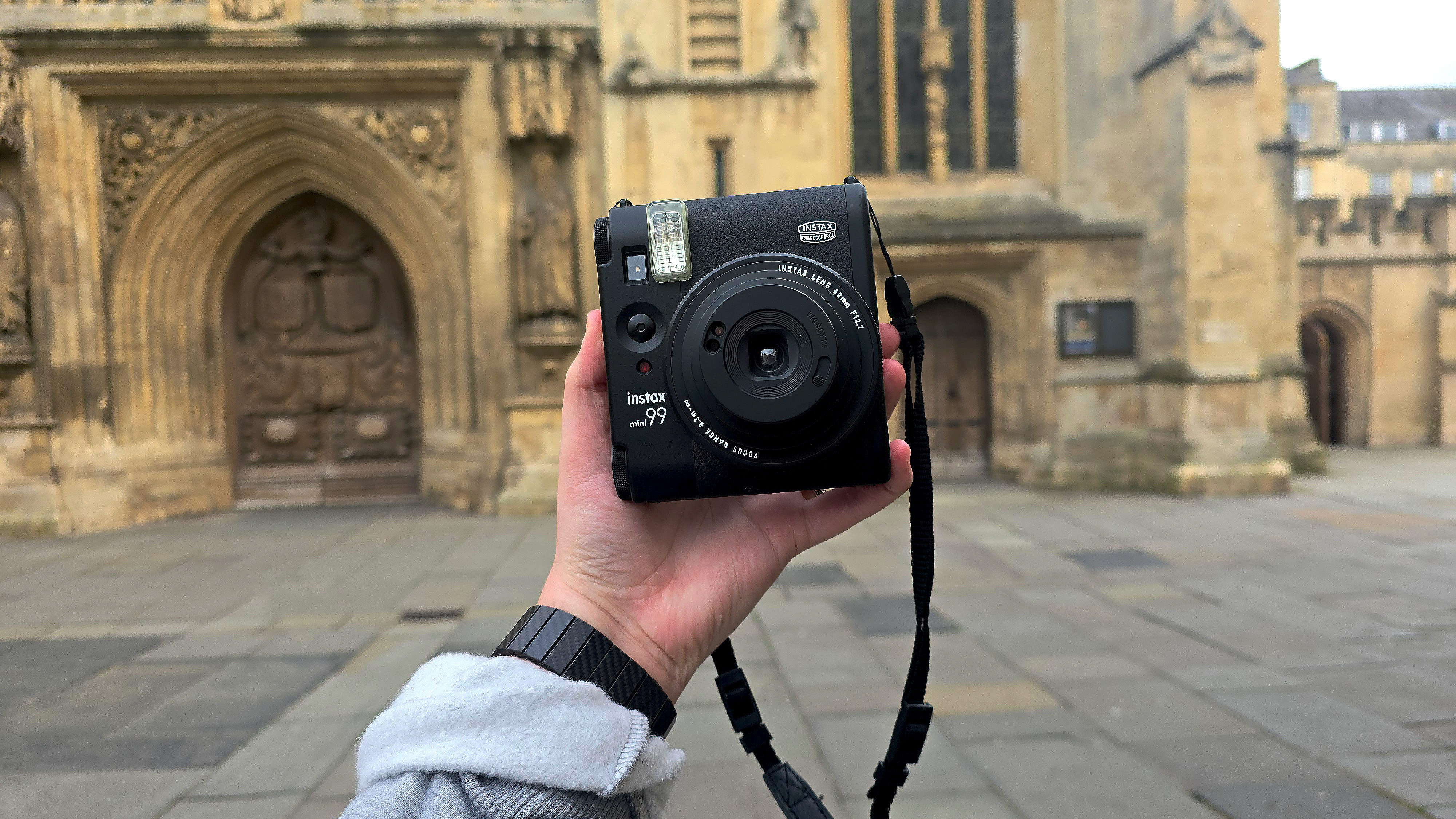
Fujifilm invited me to London last week for breakfast and a first look at the exciting new Instax Mini 99 instant camera. I've thoroughly enjoyed testing out the new features with this latest Instax, and it trumps my Instax Mini 40 in every way possible. The colour effect dial is a standout feature and fun to experiment with, but my favourite creative element is the double exposure mode.
My first impressions of the Instax Mini 99 were great, the design is gorgeous and I love how it feels to shoot with. It's not too heavy, easy to operate, and it uses a rechargeable battery which is much more reliable than having to use alkaline batteries. Some advice: If you're new to photography, don't be put off by the new control dials. They're easy to use and will help you get better prints.
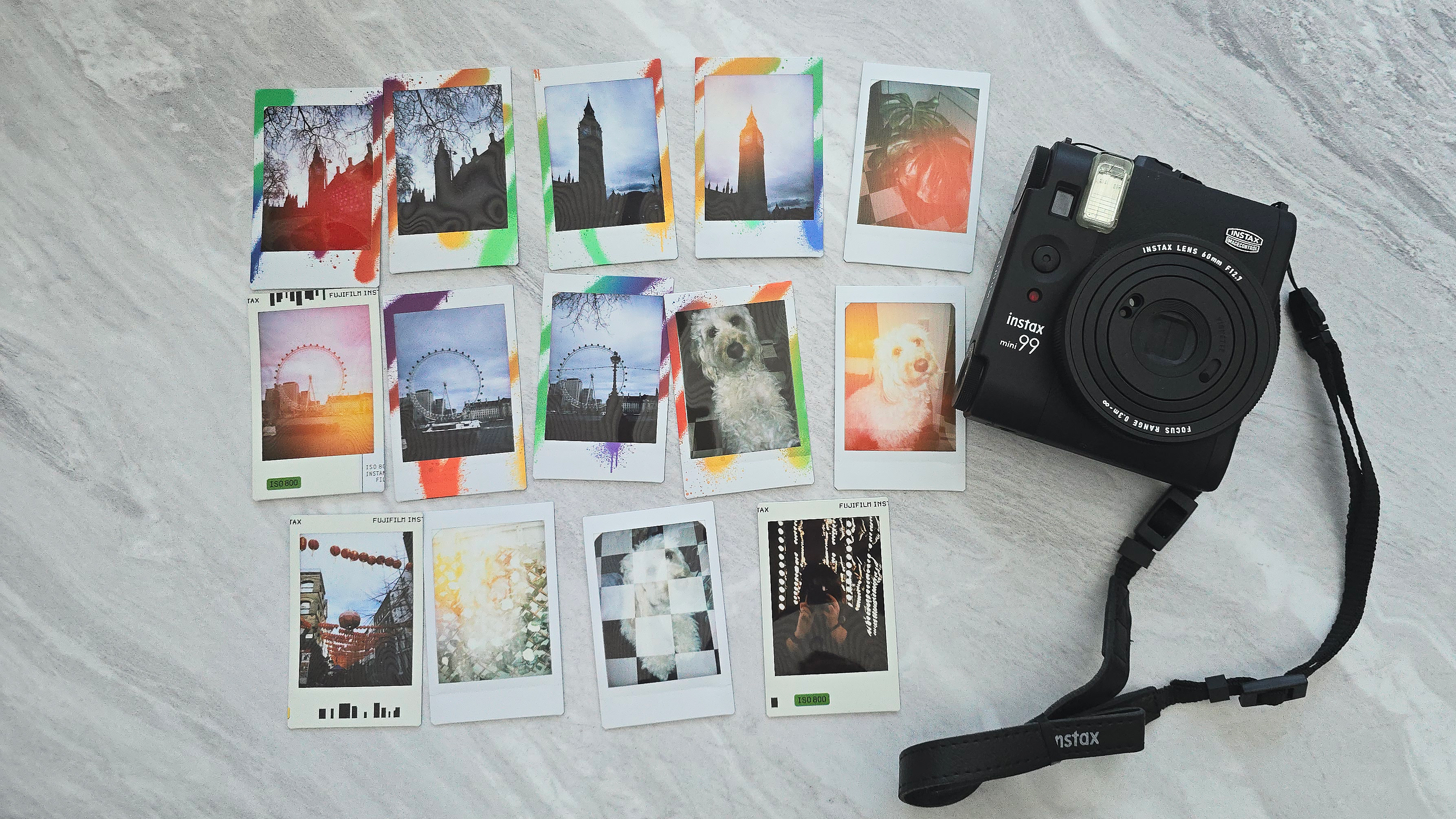
I think The Mini 99 is a game-changer for Instant photography and caters to those looking for a beginner-friendly camera, while offering advanced control options for pro photographers to get the ultimate shot. This makes the Mini 99 ideal for casual and pro photographers alike, yet still appealing to those who enjoy the instant gimmick, plus the all-black design is perfect for wedding photographers too.
What's not to love about the Instax Mini 99? Well, there are a few things to nitpick about, and I'll deep dive into these as we go on. But for a quick rundown – the new dials are excellent, the LCD screen is great for settings, and the camera overall makes photography enjoyable again. Although, I wish it had a mirror for selfie mode, and more hybrid digital elements – and that Instax film was more affordable.
Key Specs

Design
A sort-of successor to the Instax Mini 90, instant camera fans will notice how the design of the 99 has been revamped with added control dials and function buttons, plus a sleek and stylish all-black design, which strays from the silver panels and two-tone vibe of the Mini 90 – while still branding that retro-vintage appeal.
In other words, the design of the Instax Mini 99 is GORGEOUS. I was never a fan of the bubblegum pastel Instax Mini 11 and Instax Mini 12 models, which are aimed at teenagers and promote the cute selfie aesthetic. The Instax Mini 99, on the other hand, is stripped back and subtle, with a much more professional look.
It feels less awkward shooting with the Instax Mini 99 in public thanks to the sleek design, and more like I'm out with my 'proper' camera. Maybe that's just me, but one of the things I hate about street photography is having any kind of attention drawn to me or my camera, in fear of the images feeling more posed than candid. Instant cameras aren't known for being inconspicuous, but the Mini 99 certainly helps with blending in better.

Another nice design appeal of the Mini 99 is that it has two shutter buttons, making it easier to shoot in landscape orientation rather than portrait. Landscape Instax Mini prints aren't all that common, and I think that's because Instax Mini film has been optimised for portrait shots with the thicker white border of the film at the bottom for writing on or adding a date. See our best Instax film designs guide for help with choosing film for a professional look.
In terms of layout, the Mini 99 prioritises right-handed photographers. You have the main shutter button situated on the front of the camera on the right-hand side of the lens, just below the viewfinder and flash. This positioning is comfortable to press and offers easy access, just be careful not to block any part of the lens as you press it. The other shutter button is also located on the right-hand side of the camera but has been neatly incorporated into the centre of the exposure dial.
On the opposite side of the exposure dial, you have the colour effect dial, and on the back of the camera, you have your viewfinder, LCD display, three function buttons, and the panels for inserting the lithium-ion battery and your pack of Instax film using the top slider. On the lens itself, there's a manual vignette switch for applying a creative vignette (dark border) to your images, and there's also a tripod mount on the bottom of the camera body to attach the included base grip.
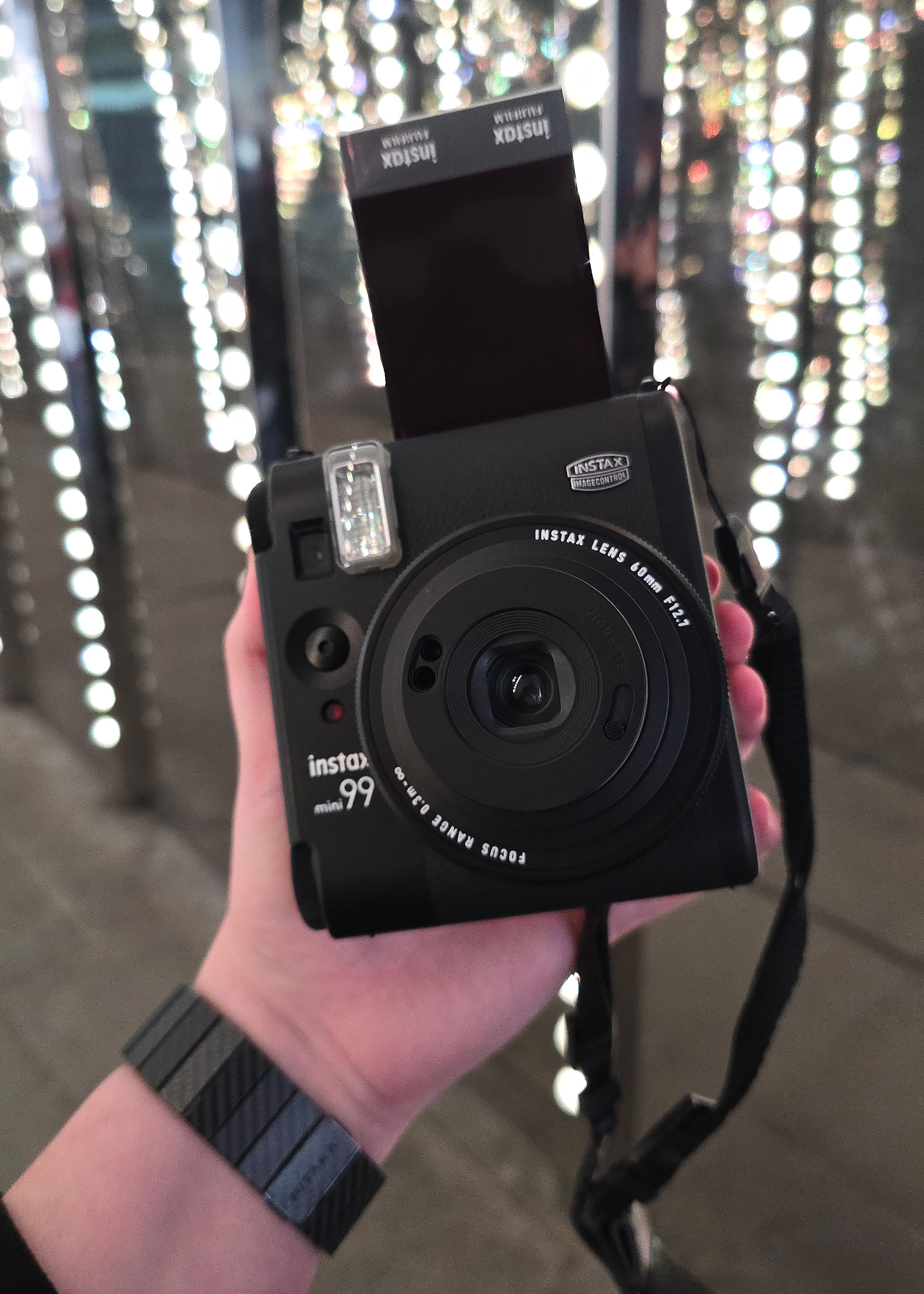
It's clear that Instax has thought of everything, and carefully considered the design of this new camera, given that it seems to function seamlessly with each mode and setting. One thing that I do wish Instax had included was a mirror on the front of the lens unit, exactly like it has on the Instax Mini 40, as this makes it so much easier to align the shot when taking a selfie rather than it being guesswork and a potentially wasted shot.
One last design nitpick is the ease with which the dials can shift out of place between uses. For example, I was shooting down a dark tunnel when I accidentally knocked the exposure dial a little with my thumb, moving it to a darker setting. The control dials are definitely sturdy enough to not break, although a lock mechanism to keep settings in place could be a welcome feature.
Features & performance
The Instax Mini 99 has some exceptional new features that make instant photography a lot of fun. I've mentioned a handful of these in the design section above, but the real stars of the show are the two control dials for exposure compensation, and switching between the six new colour effects.
Filters you find on social media can sometimes look a little excessive, but these colour effects built into the Instax Mini 99 don't overdo it, and the dial allows you to switch between six analogue colour effects powered by colour-changing LEDs located in the four corners inside the camera.
There's Light Leak (LL), Sepia (SP), Soft Magenta (SM), Light Blue (LB), Warm Tone (WT), and Faded Green (FG) to choose from – or keep it on 'N' for none. I really enjoyed using the light leak feature, and this is definitely the effect that I've used the most while testing the Instax Mini 99. It looks like you've caught the sun in a natural light flare, and adds that extra cherry on top if you're going for a vintage print vibe.
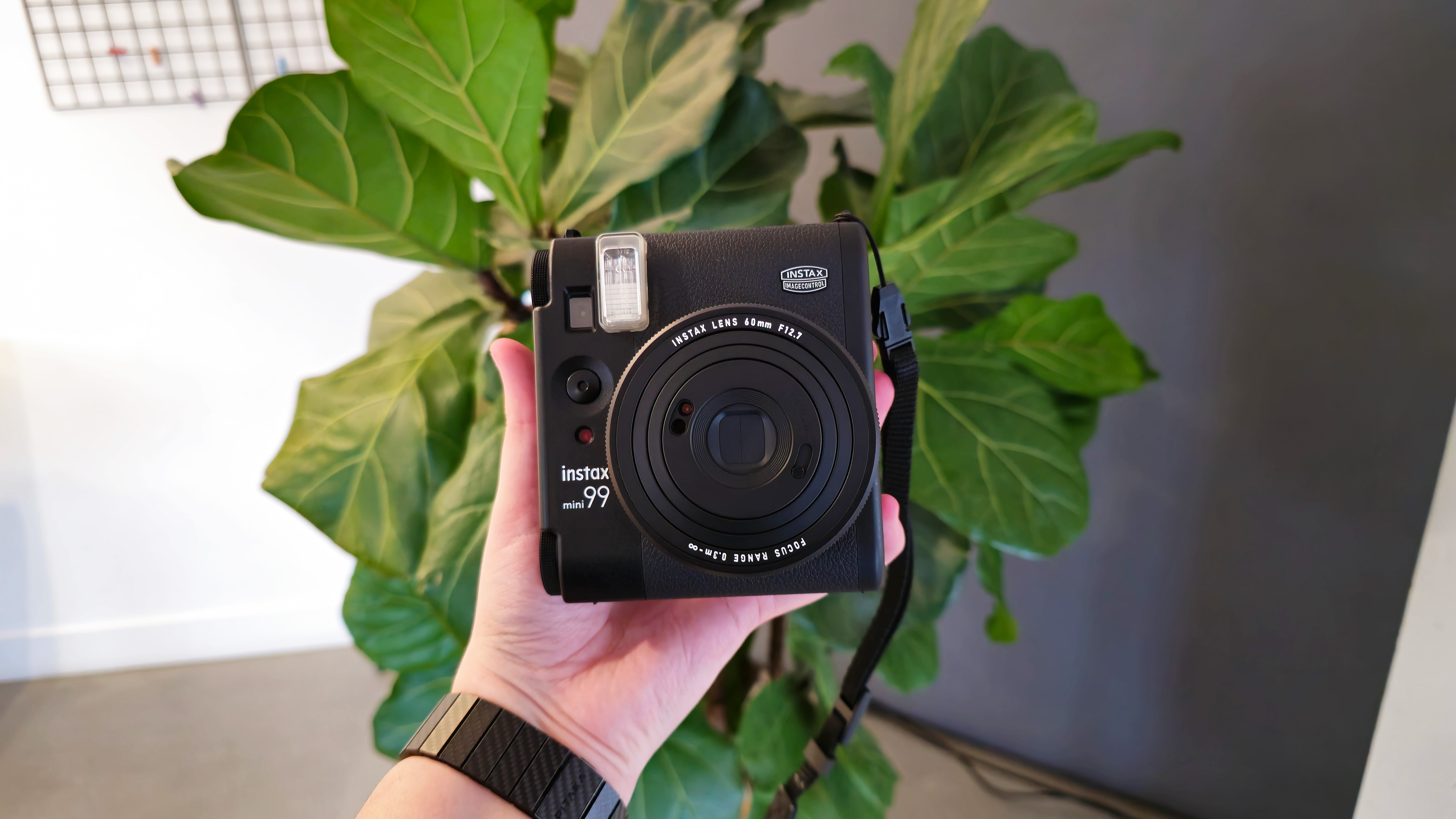
Five levels of exposure control can be changed using the exposure dial, and these essentially allow for more or less light to be present in your prints, the same way that exposure compensation works on a digital camera. The dials turn quite easily without force, so double-check your settings before you shoot to make sure you haven't accidentally knocked them out of place.
Other notable features of the Instax Mini 99 include the mode buttons that allows you to change between indoor mode, sports mode, bulb mode, and double exposure. Shooting in indoor mode will give you brighter interiors, and sports mode reduces blur for subjects that move. I found that this was also a great mode to be in for taking photos of dogs.
Bulb mode allows you to keep the shutter open for a longer duration, letting in more light, and creating effects like light trails and night shots. Keep in mind that you'll need a tripod for this to be successful, and you can press and hold the shutter button to activate it. Double exposure mode is activated by pressing the shutter button twice, or selecting the mode using the LCD screen. This allows you to blend two images together by shooting two exposures.
@swaagrid_ ♬ Dancing In The Moonlight - 苏颜悦
Another nice touch is the rechargeable lithium-ion 680mAh battery that is included with the camera, which is more reliable than using alkaline batteries and easy to charge on the go with the included USB-C cable.
There's also the option to control flash settings, by turning it off completely or reducing red eye, and you can set a self-timer too for hands-free shots. If you plan to take a selfie, you'll need to be in macro mode for this (unless you use a tripod and stand further back from the camera). You can switch focusing modes by rotating the control ring around the lens, with macro being the furthest away.

I think there should've maybe been a separate on/off button to activate the camera for a beginner-friendly design, since it's not immediately obvious to new Instax owners how to actually turn the camera on (you twist the lens). This can easily be discovered by reading the device manual – but who reads manuals these days?
I do think it makes sense how Instax has the camera activation set up, since you need to choose a shooting mode (landscape, standard, or macro) depending on your focal length before you can start shooting. Doing this as you activate the camera saves you from forgetting to change it later, and getting a blurry image as a result.
The general guide is to use landscape mode (three meters to infinity) when shooting a subject that is more than 3 meters away and to use macro mode for clear shots of subjects that are 30-60 centimetres (0.3-0.6m) away. Standard mode is for mid-range lengths between 0.6 to three meters.
Sample Images

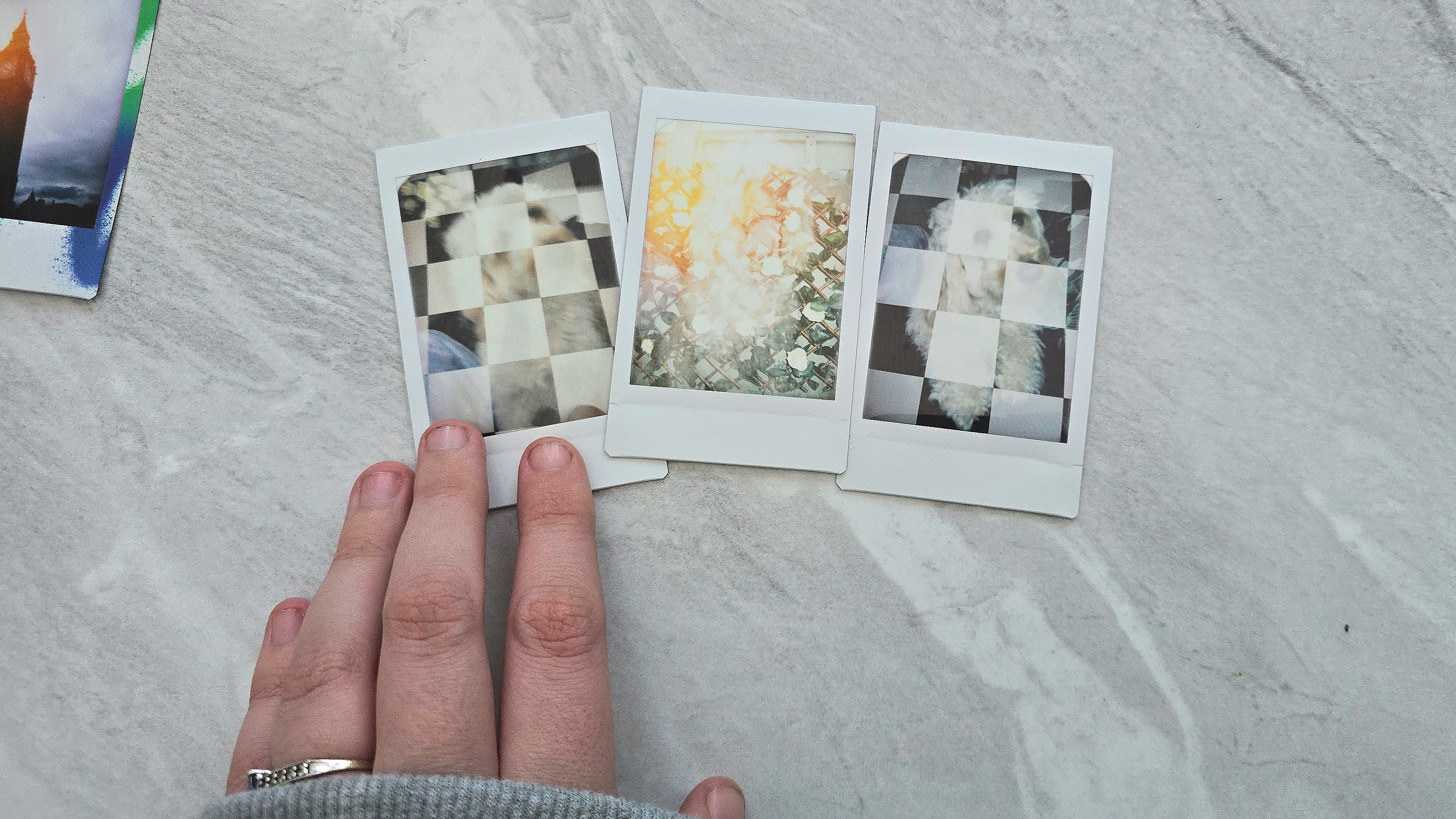
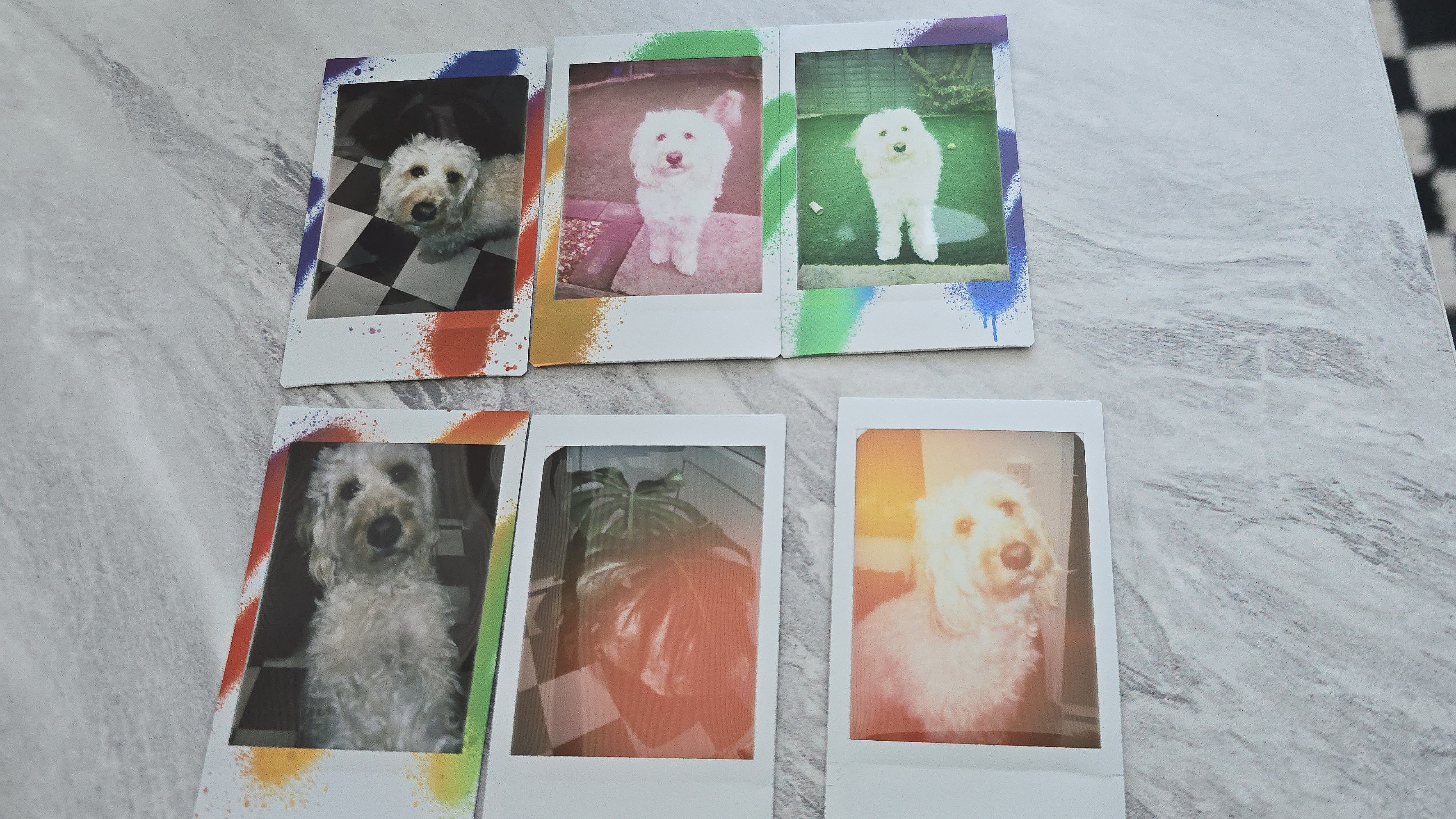
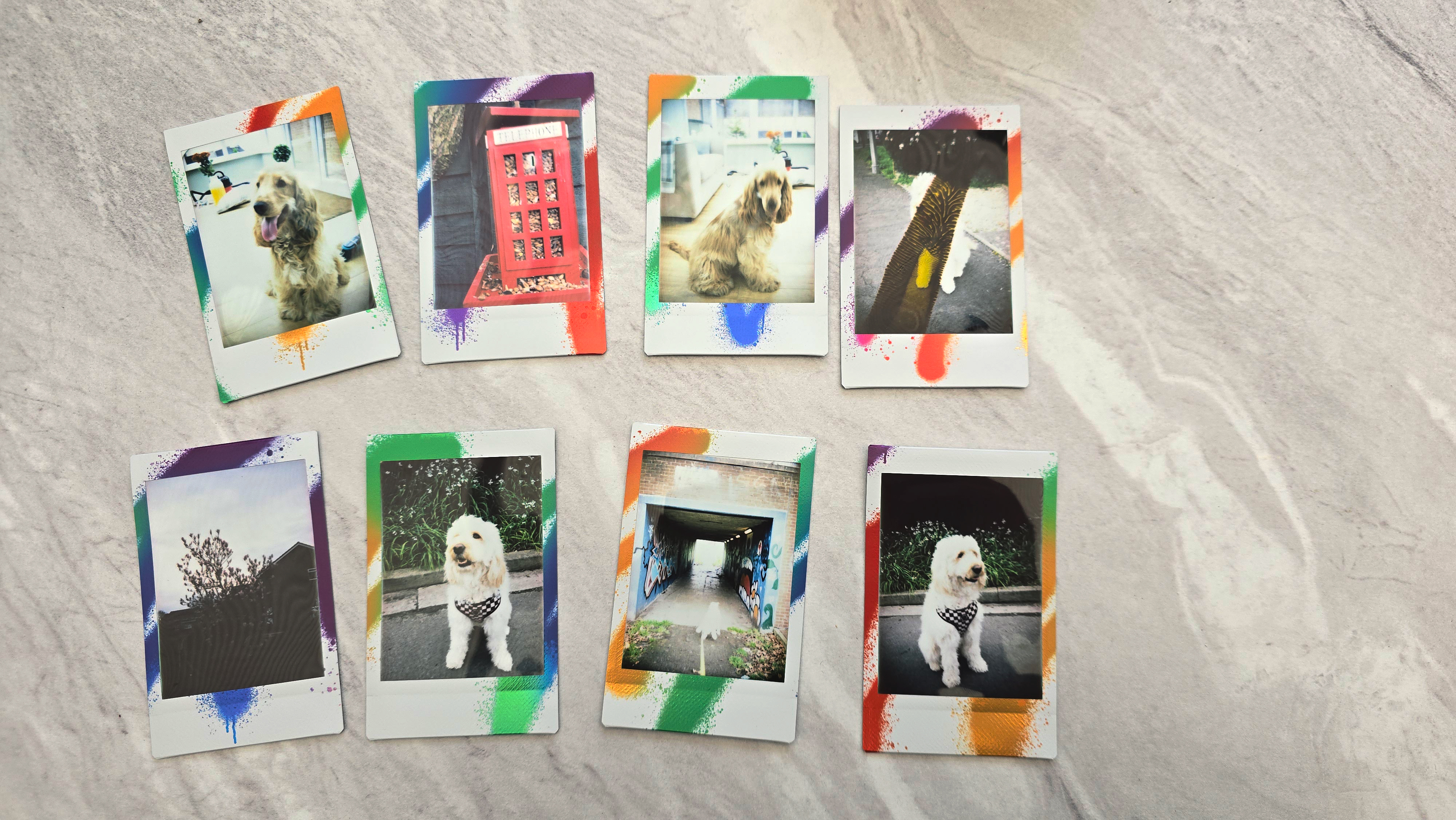
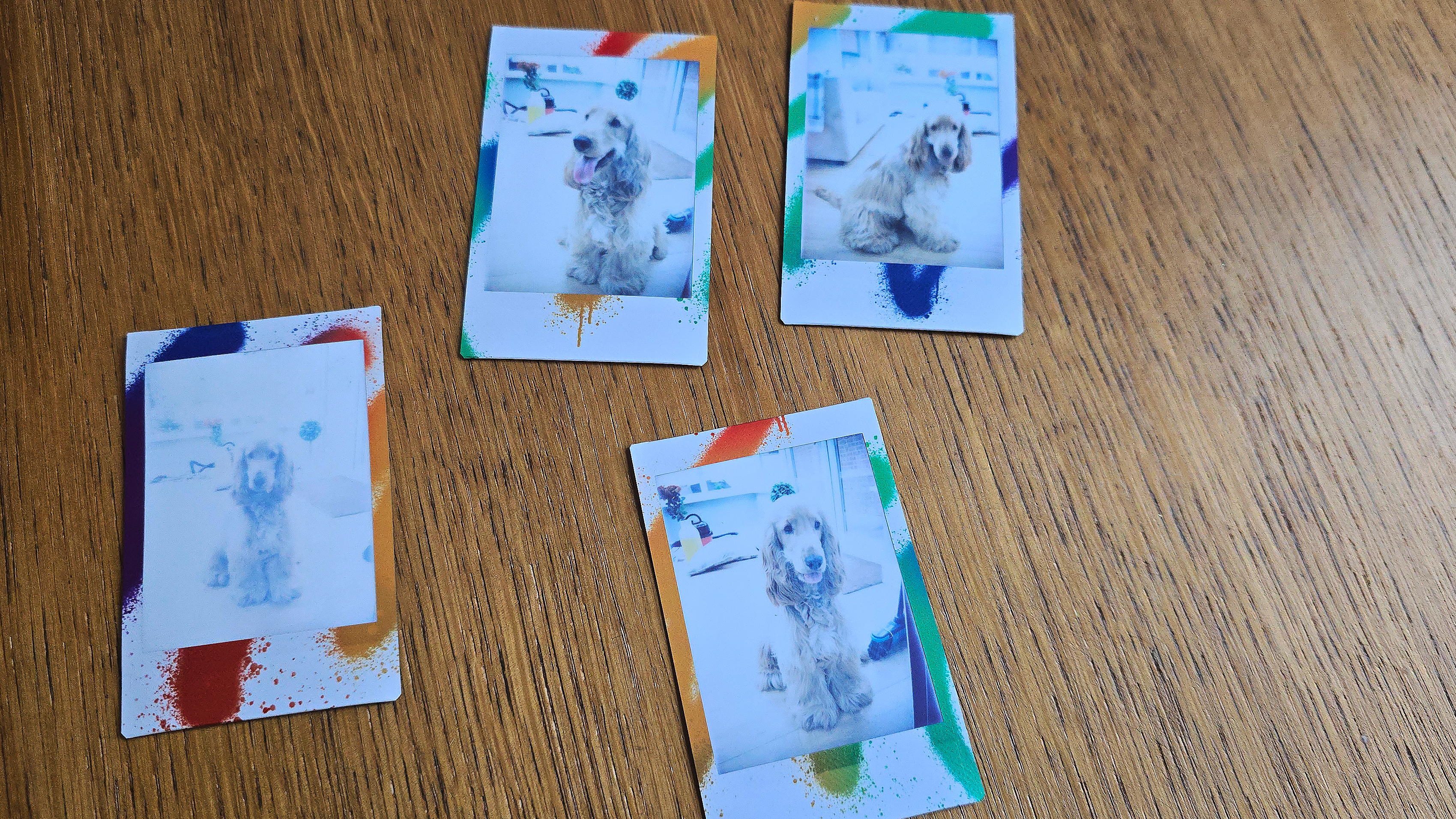
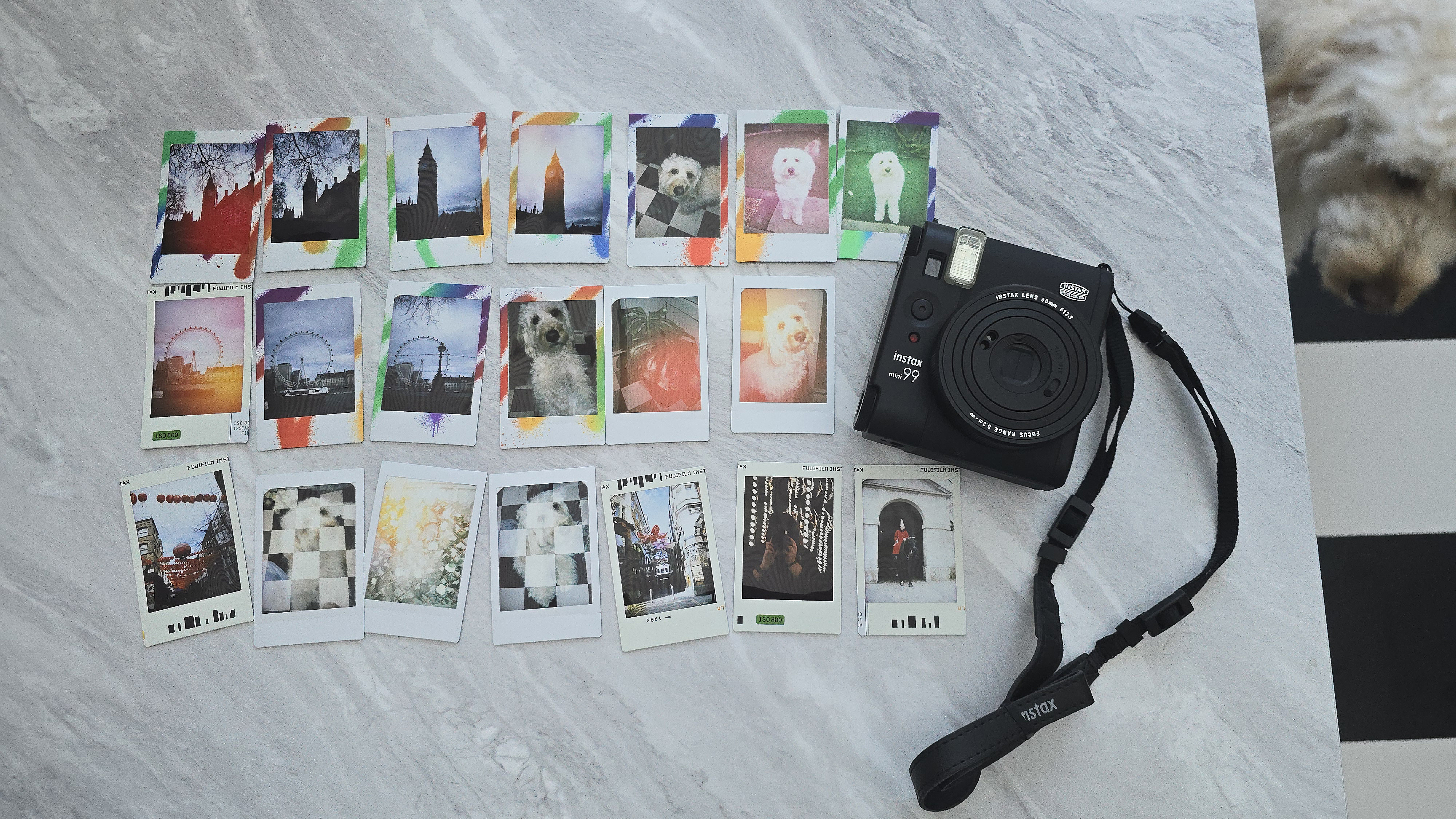
As you can see from the image gallery above, there are a ton of ways to get creative with your prints using the new features of the Instax Mini 99. Double exposures took a lot of experimenting to get a decent shot, with my checkerboard floor being a little too dominant and masking the subject (my dog Tilly) quite heavily.
Once I got the hang of double exposures, my next favourite thing to play around with was the light leak feature on the colour dial. I'm not sure how Fujifilm has managed to get this mode so accurate, but it really does look like a streak of light has infiltrated the print and creates a nice summer glow which I really like.
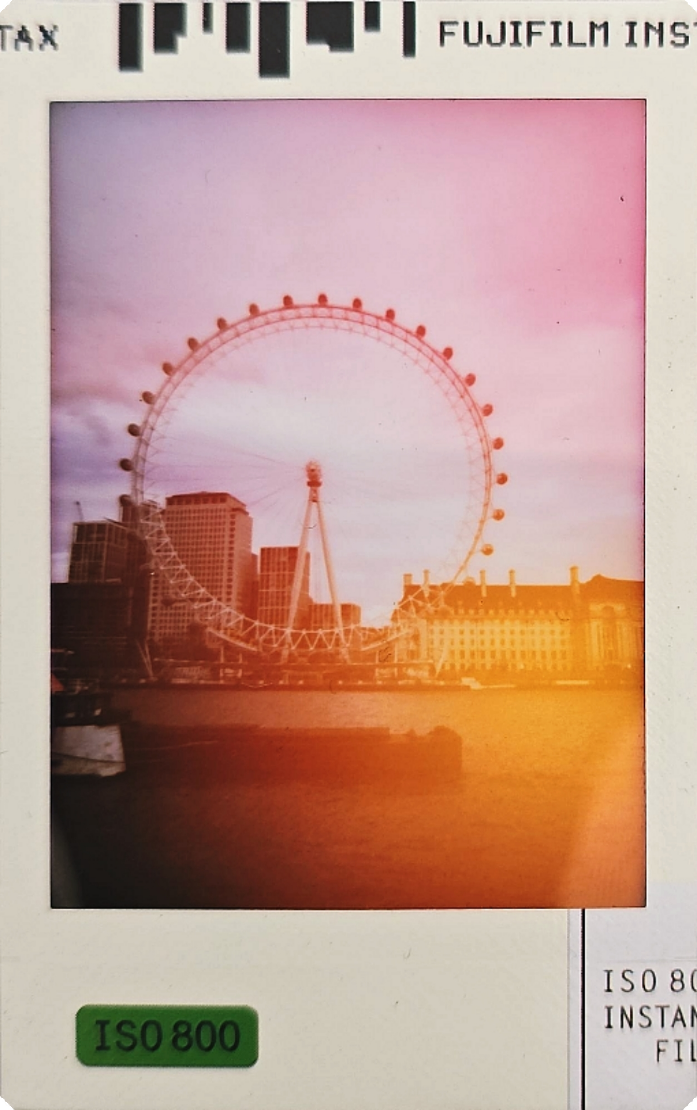

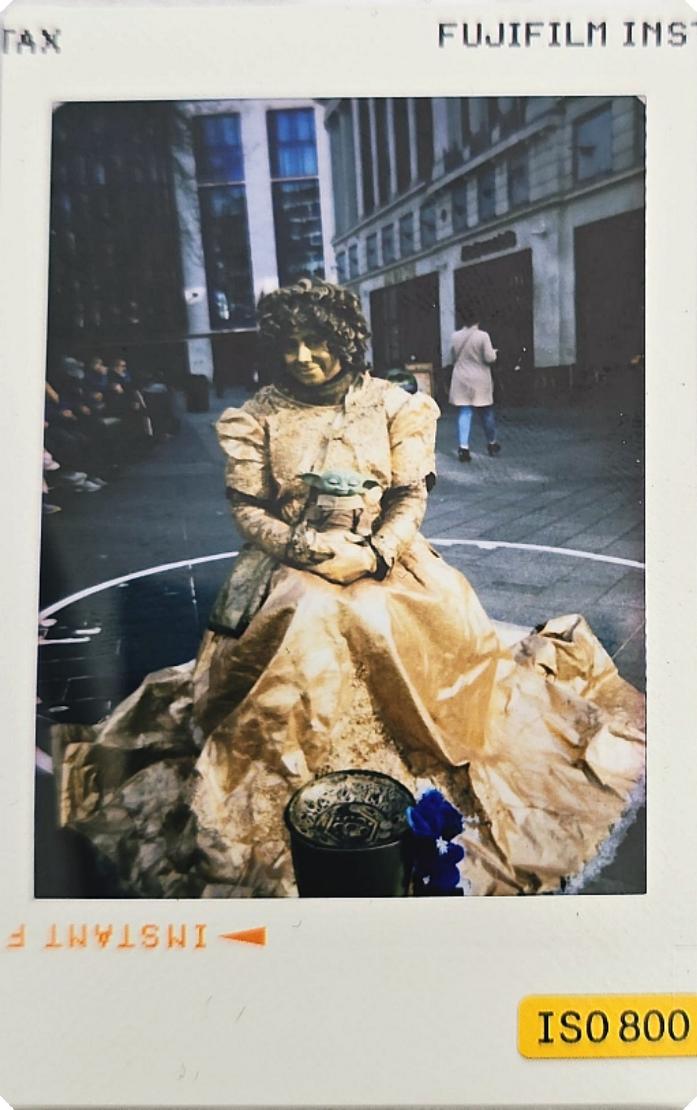

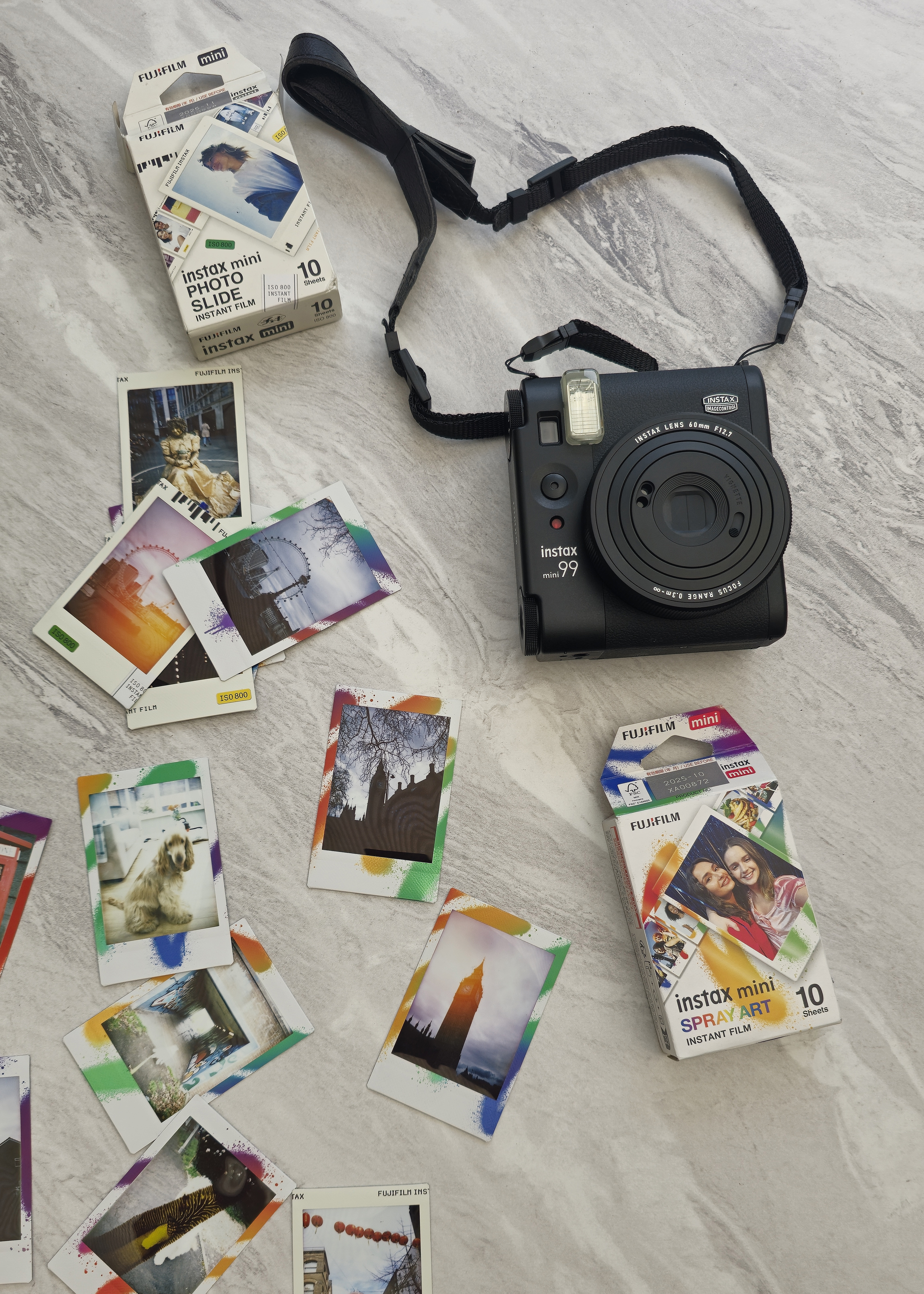
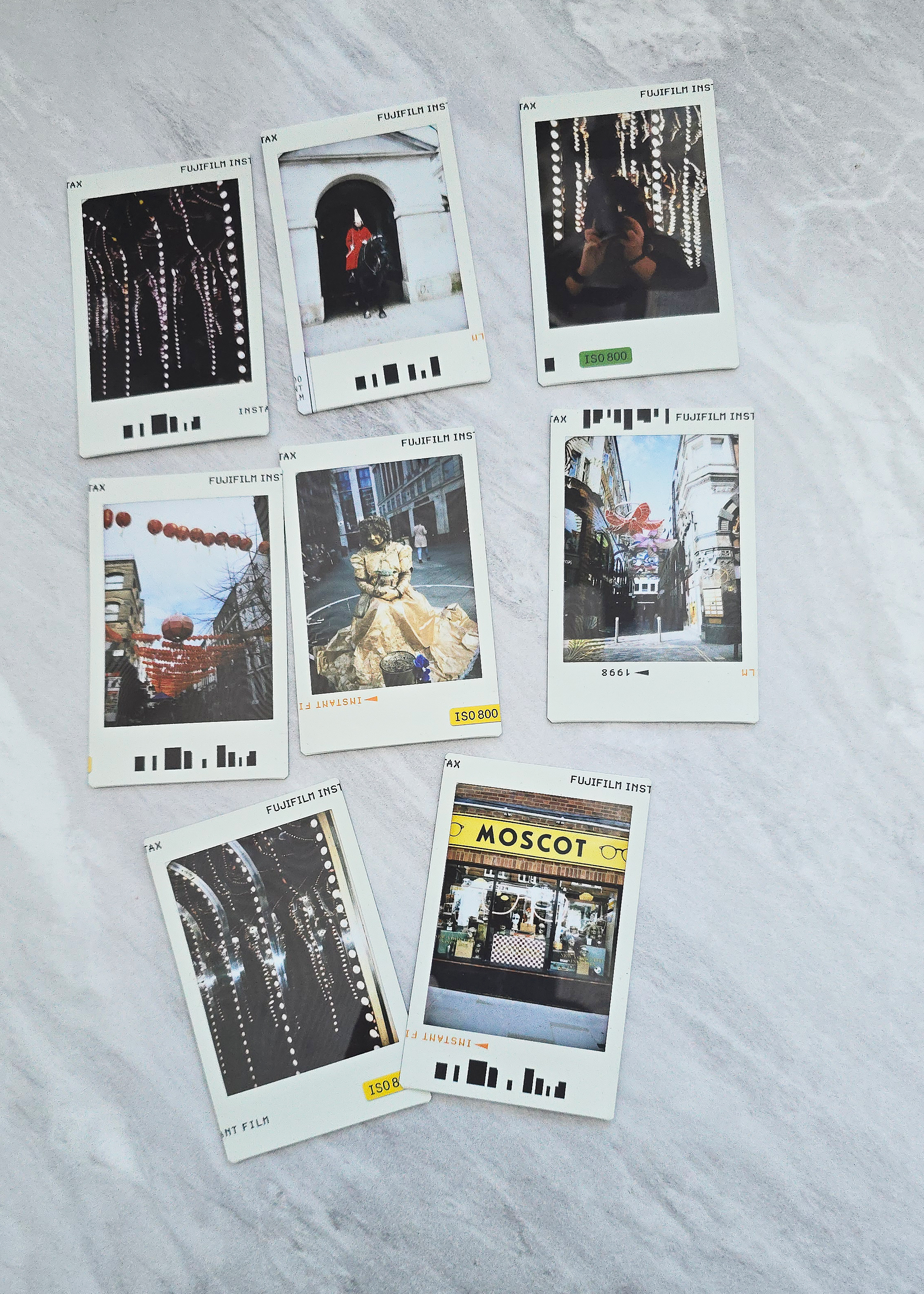
Instax Mini 99 Vs Instax Mini Evo
Up until now, the Instax Mini Evo has been the showrunner for those wanting a digital instant camera, but the new Instax Mini 99 is by far the most advanced Fujifilm instant camera we've seen yet. It differs from the Evo in that it doesn't have the option to shoot digital images, and you can't preview the shot before it gets printed, but as far as analogue features go – the Mini 99 takes the crown.
For £174.99 / $199.95, the Instax Mini 99 isn't the cheapest, especially compared with the typical £70-£100 price range for other Instax Mini models. It's also the exact same price as the Instax Mini Evo, with which you can arguably get more for your money as it doubles as a digital camera.
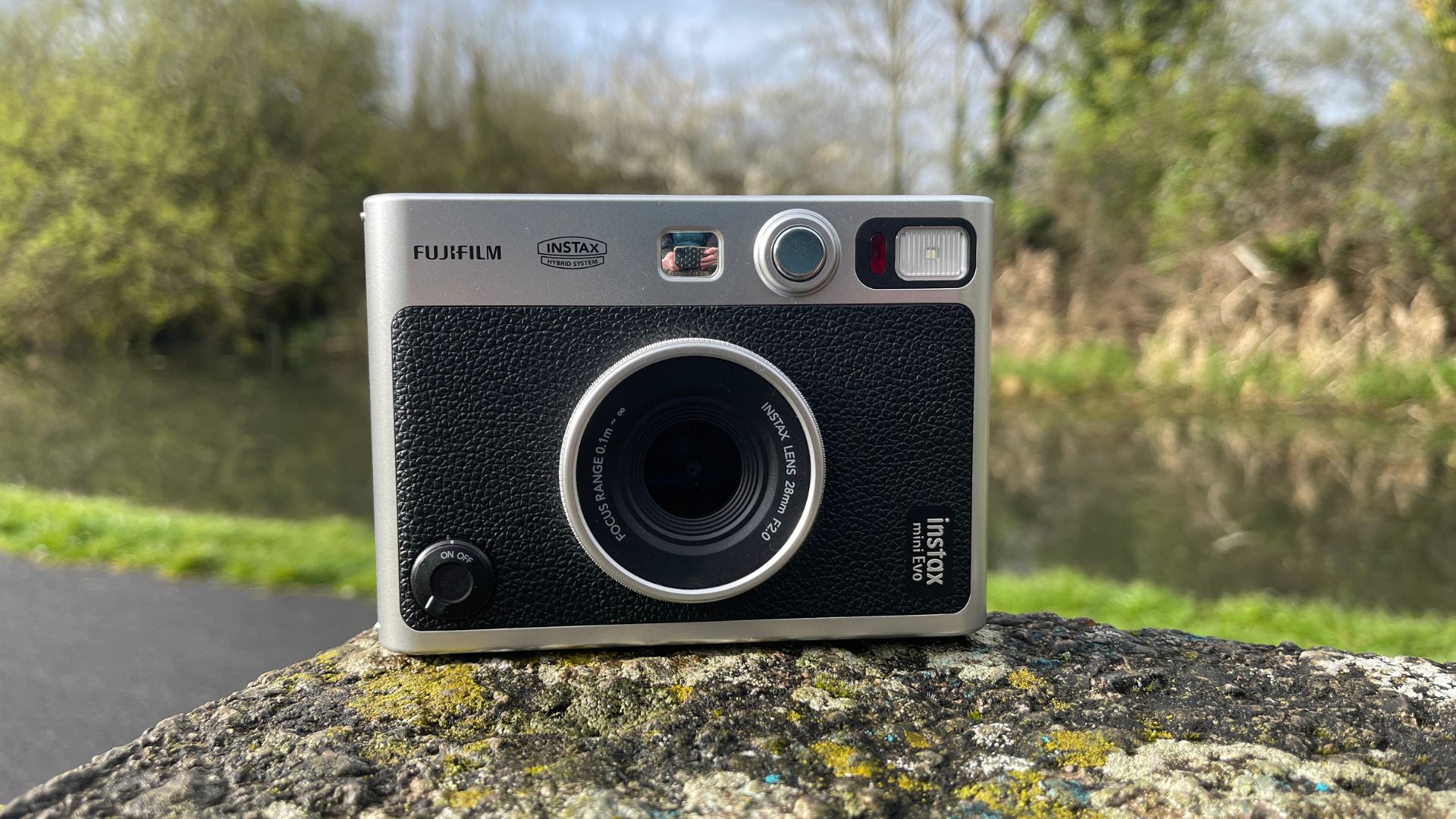
The Instax Mini Evo is what's known as a hybrid digital instant camera, which essentially means that it works as a smart digital printer, and you can browse through and edit your captured photos in-camera or via a smartphone app before you choose to print them (as opposed to it being printed instantly). Although as a standalone digital camera, the image quality is nothing to shout about.
You could argue that this defeats the gimmick of owning an 'instant' camera that's more spontaneous, but the price of film is pretty expensive these days, so it's sometimes good to be a bit more selective of which images deserve to be printed and which are scraps.
Should you buy it?
Overall, I think the new Instax Mini 99 strikes the perfect balance of instant cameras with digital photography, allowing for much better control over the exposure and the colour of your printed images – while still retaining the fun novelty of blindly shooting without a care in the world.
I had a lot of fun shooting and experimenting with this camera, and Instax seems to be embracing digital elements into its instant range lately, to keep things modern with a nostalgic twist, which I think the Mini 99 does excellently.
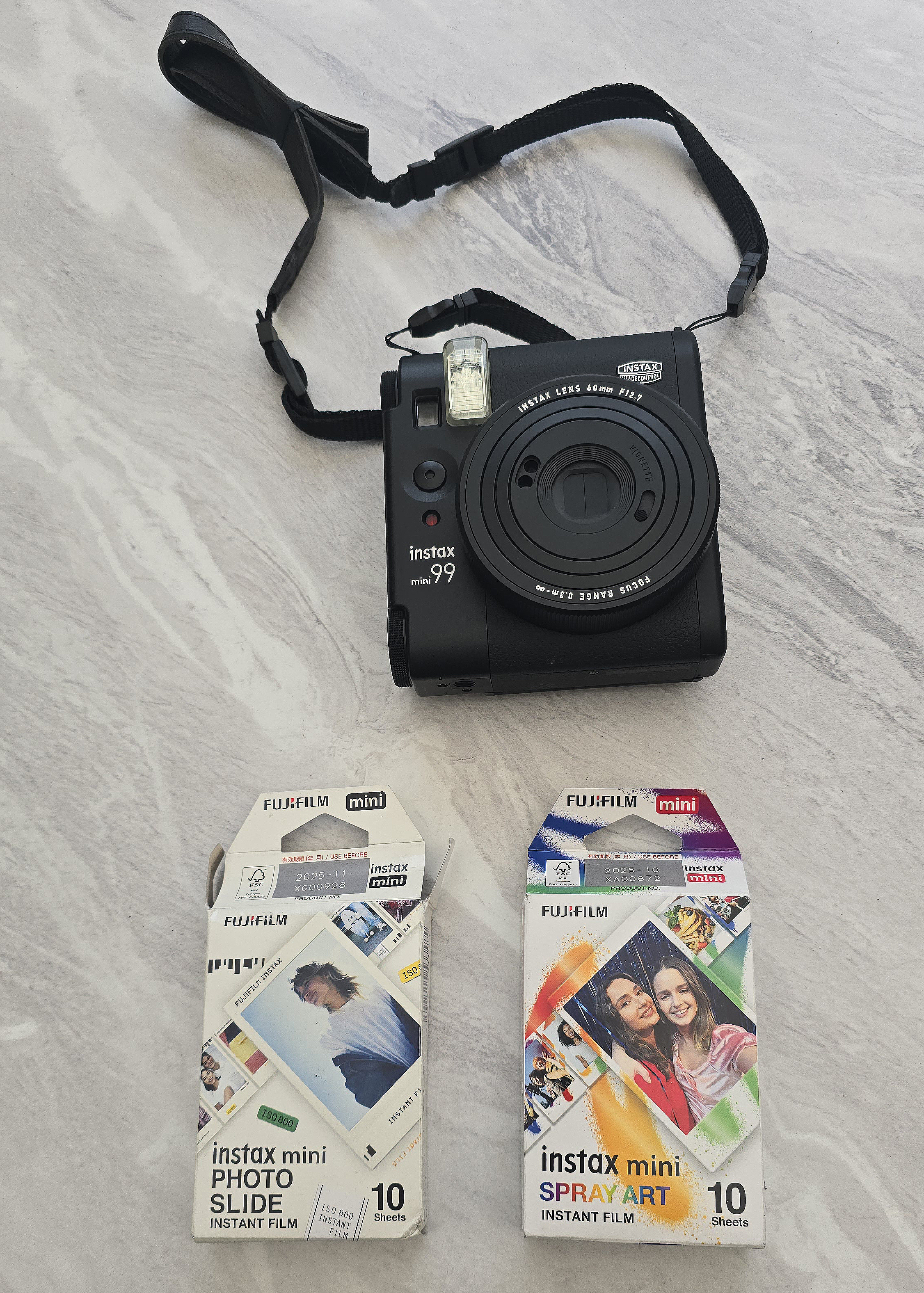
It's important to remember that the quality of Instant cameras will never match the resolution you get with professional-grade DSLR or mirrorless cameras, so really it's all about the fun of making memories and less about getting a gallery-worthy shot.
The portability of this camera is another factor that makes it great for short getaways, summer vacation snaps, and taking to a house party. Anywhere that you maybe wouldn't take your 'proper' camera is where an instant camera comes in handy. If you're looking for a digital camera that can fit in your back pocket, take a look at the Instax Pal camera (which admittedly I still think is a bit ugly). It works based on app integration and prints your images through a Fujifilm Link printer.
Made your mind up? The new Instax Mini 99 is available to preorder now via Amazon or directly from Fujifilm, as well as retailers including Adorama (US), and Jessops (UK) with orders expected to ship from April 04. There's also a new film pack too, the Instax Mini 'Photo Slide' film, costing £8.99 for a pack of 10 prints.







